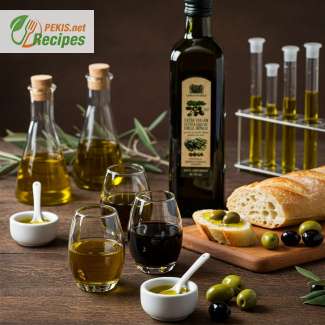
Olive Oil Test: Everything You Need to Know
Olive oil is one of the most valuable and widely used cooking oils in the world. It is known for its numerous health benefits, culinary versatility, and rich nutritional profile. However, with so many different brands and types available on the market, it is crucial to understand how to properly test olive oil quality to ensure you are using a premium product.
This comprehensive guide will cover everything about olive oil, from its characteristics, uses, and health benefits to its nutritional composition, homemade production, and quality testing methods.
Characteristics of High-Quality Olive Oil
High-quality extra virgin olive oil (EVOO) should possess distinct flavor profiles, aromas, and colors. Here are the key characteristics to look for:
- Color: The color of olive oil can range from golden yellow to deep green, depending on the olive variety and the time of harvest.
- Aroma: A fresh and fruity aroma with hints of grass, green apple, tomato, or almonds.
- Taste: A balance between bitterness, fruitiness, and peppery aftertaste.
- Texture: A smooth and slightly thick texture, not watery or excessively greasy.
The Importance of Testing Olive Oil Quality
Due to widespread adulteration, many olive oils on the market are blended with lower-quality oils or misrepresented as extra virgin. Testing olive oil at home can help consumers determine if they are purchasing a genuine product.
How to Test Olive Oil at Home
Here are several simple yet effective tests you can perform to check the authenticity of your olive oil:
1. The Fridge Test
- Pour a small amount of olive oil into a glass container.
- Place it in the refrigerator for 24 to 48 hours.
- If the oil solidifies or thickens, it indicates a high presence of monounsaturated fats, which is a good sign of authenticity.
- However, this test is not always reliable, as some genuine oils may not solidify depending on their fatty acid composition.
2. The Taste and Smell Test
- Pour a small amount of olive oil into a tasting glass.
- Swirl it gently and warm it with your hands.
- Take a deep sniff; authentic olive oil will have fresh, grassy, or fruity aromas.
- Sip the oil and let it coat your palate; real EVOO should have a peppery kick at the back of the throat.
3. The Authenticity Test with a UV Light
- Extra virgin olive oil has natural fluorescence and may glow under UV light.
- If the oil glows bright green, it can be an indicator of authenticity.
4. The Water Test
- Pour a small amount of olive oil into a glass of water.
- Authentic olive oil will float on top without mixing into the water.
Health Benefits of Olive Oil
Olive oil is rich in monounsaturated fats, antioxidants, and anti-inflammatory compounds, making it one of the healthiest oils available. Some of its key health benefits include:
- Supports heart health: Helps reduce LDL (bad cholesterol) and increase HDL (good cholesterol).
- Anti-inflammatory properties: Contains oleocanthal, which has pain-relieving and anti-inflammatory effects.
- Rich in antioxidants: Helps fight oxidative stress and prevent cell damage.
- Aids digestion: Promotes gut health and improves nutrient absorption.
- Supports brain function: May help reduce the risk of Alzheimer’s disease and cognitive decline.
- Improves skin and hair health: Contains vitamin E, which nourishes and protects the skin and hair.
Nutritional Composition of Olive Oil
Olive oil is packed with essential nutrients and healthy fats:
Nutrient: Amount per 100g
Calories: 884 kcal
Total Fat: 100g
Monounsaturated Fat: 73g
Saturated Fat: 14g
Polyunsaturated Fat: 11g
Vitamin E: 14mg (93% DV)
Vitamin K: 60mcg (50% DV)
Antioxidants: High
How to Store Olive Oil Properly
Proper storage helps maintain the quality and freshness of olive oil. Here are some tips:
- Store in a cool, dark place, away from direct sunlight.
- Use dark glass bottles to prevent oxidation.
- Keep the bottle tightly sealed to prevent air exposure.
- Avoid storing near heat sources like stoves or ovens.
Growing Olive Trees at Home
If you want to produce your own olive oil, growing olive trees at home is a great option. Here’s how:
- Choose the right variety: Some varieties thrive in Mediterranean climates, while others are adaptable to different conditions.
- Provide ample sunlight: Olive trees need at least 6-8 hours of sunlight daily.
- Use well-draining soil: Preferably sandy or loamy soil with good drainage.
- Water moderately: Olive trees are drought-tolerant but benefit from occasional deep watering.
- Prune regularly: Helps maintain the tree’s shape and encourages better fruit production.
Understanding olive oil quality and testing it at home ensures that you are using a genuine, healthy product. Whether you are a food enthusiast, home cook, or health-conscious consumer, learning how to evaluate olive oil will help you make better purchasing decisions.
By incorporating authentic extra virgin olive oil into your diet, you can enjoy its exceptional flavor, nutritional benefits, and culinary versatility while ensuring that you are consuming a pure and high-quality product.